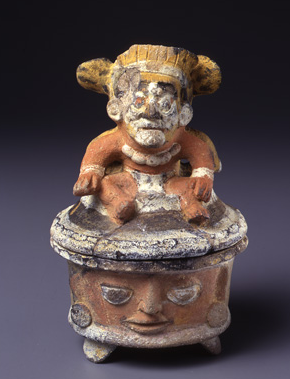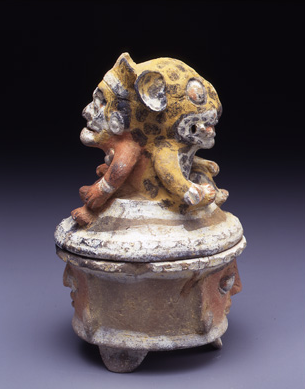Sun God – Jaguar Spirit of the Underworld
Home » Articles and News » Sun God – Jaguar Spirit of the Underworld
Emory University

Mesoamericaa, Highland Guatemala, Maya. Early Classic, AD 200-550.
Ceramic. 7 x 5 1/8 in. diam.
1992.15.176
Gift of Cora and Laurence C. Witten II
 This image was to be seen with the aromatic smoke of burning pine resin seeping out from between base and lid. This means that the dual figure would have been wreathed in smoke, partly visible, as in a vision or dream. In this way the design of the object complemented its subject. Smoke was considered a properly ethereal mode of communication between the human and the supernatural realms.
This image was to be seen with the aromatic smoke of burning pine resin seeping out from between base and lid. This means that the dual figure would have been wreathed in smoke, partly visible, as in a vision or dream. In this way the design of the object complemented its subject. Smoke was considered a properly ethereal mode of communication between the human and the supernatural realms.
© 2012 Emory University
Michael C. Carlos Museum
Home » Articles and News » Sun God – Jaguar Spirit of the Underworld
